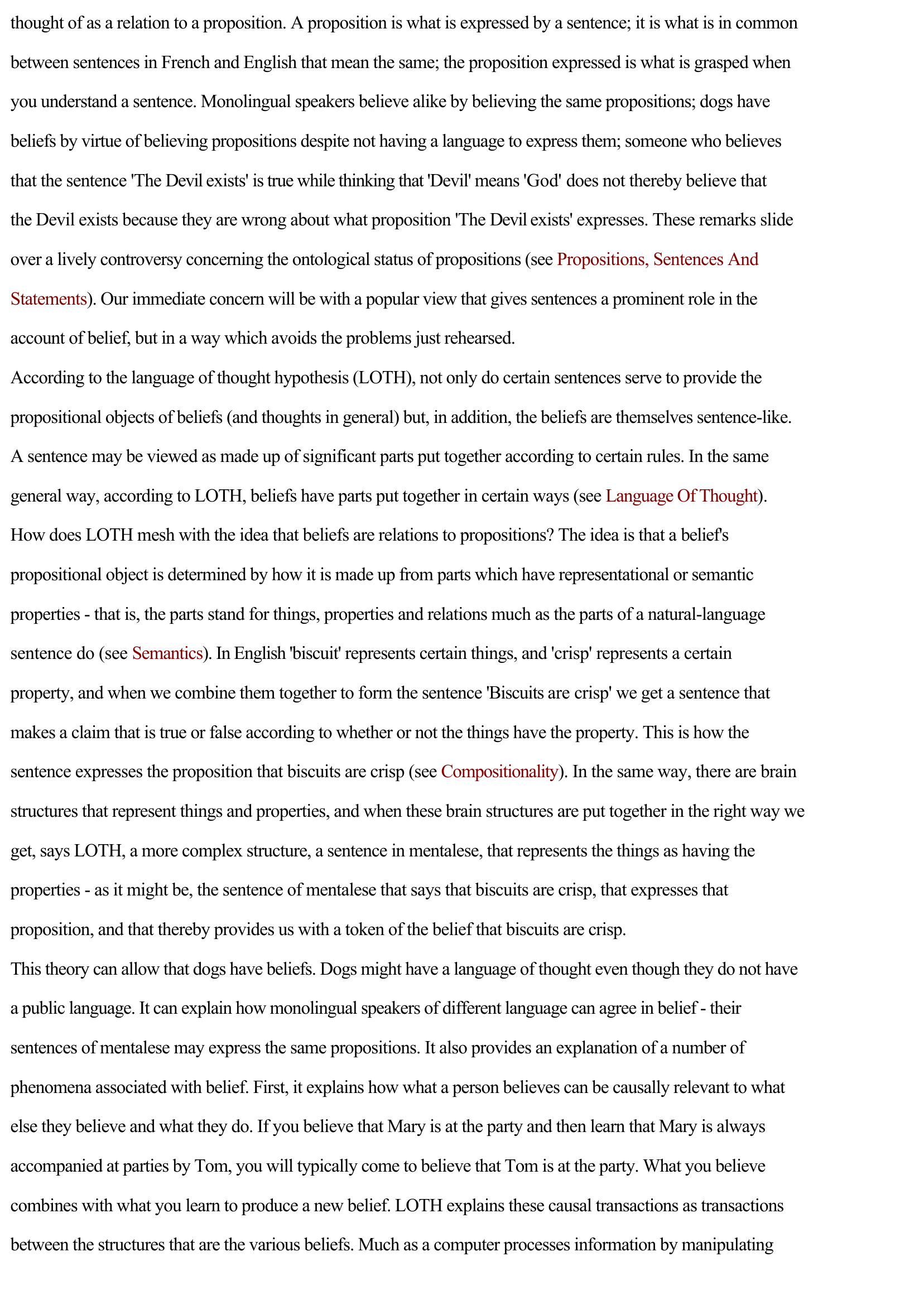Belief
Publié le 22/02/2012
Extrait du document
«
thought of as a relation to a proposition.
A proposition is what is expressed by a sentence; it is what is in common
between sentences in French and English that mean the same; the proposition expressed is what is grasped when
you understand a sentence.
Monolingual speakers believe alike by believing the same propositions; dogs have
beliefs by virtue of believing propositions despite not having a language to express them; someone who believes
that the sentence 'The Devil exists' is true while thinking that 'Devil' means 'God' does not thereby believe that
the Devil exists because they are wrong about what proposition 'The Devil exists' expresses.
These remarks slide
over a lively controversy concerning the ontological status of propositions (see Propositions, Sentences And
Statements ).
Our immediate concern will be with a popular view that gives sentences a prominent role in the
account of belief, but in a way which avoids the problems just rehearsed.
According to the language of thought hypothesis (LOTH), not only do certain sentences serve to provide the
propositional objects of beliefs (and thoughts in general) but, in addition, the beliefs are themselves sentence-like.
A sentence may be viewed as made up of significant parts put together according to certain rules.
In the same
general way, according to LOTH, beliefs have parts put together in certain ways (see Language Of Thought ).
How does LOTH mesh with the idea that beliefs are relations to propositions? The idea is that a belief's
propositional object is determined by how it is made up from parts which have representational or semantic
properties - that is, the parts stand for things, properties and relations much as the parts of a natural-language
sentence do (see Semantics ).
In English 'biscuit' represents certain things, and 'crisp' represents a certain
property, and when we combine them together to form the sentence 'Biscuits are crisp' we get a sentence that
makes a claim that is true or false according to whether or not the things have the property.
This is how the
sentence expresses the proposition that biscuits are crisp (see Compositionality ).
In the same way, there are brain
structures that represent things and properties, and when these brain structures are put together in the right way we
get, says LOTH, a more complex structure, a sentence in mentalese, that represents the things as having the
properties - as it might be, the sentence of mentalese that says that biscuits are crisp, that expresses that
proposition, and that thereby provides us with a token of the belief that biscuits are crisp.
This theory can allow that dogs have beliefs.
Dogs might have a language of thought even though they do not have
a public language.
It can explain how monolingual speakers of different language can agree in belief - their
sentences of mentalese may express the same propositions.
It also provides an explanation of a number of
phenomena associated with belief.
First, it explains how what a person believes can be causally relevant to what
else they believe and what they do.
If you believe that Mary is at the party and then learn that Mary is always
accompanied at parties by Tom, you will typically come to believe that Tom is at the party.
What you believe
combines with what you learn to produce a new belief.
LOTH explains these causal transactions as transactions
between the structures that are the various beliefs.
Much as a computer processes information by manipulating.
»
↓↓↓ APERÇU DU DOCUMENT ↓↓↓
Liens utiles
- African Music I INTRODUCTION Sacred Christian Music of Nigeria Among the Igede people of Nigeria, Christianity has been syncretized with the existing religious belief system.
- Belief and knowledge

































